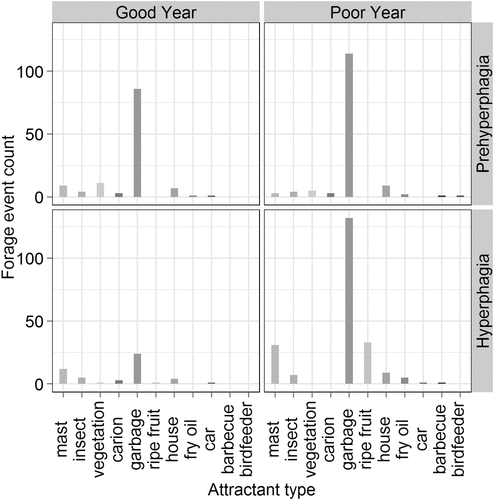Schulte-Hostedde AI, Mazal Z, Jardine CM, Gagnon J. Enhanced access to anthropogenic food waste is related to hyperglycemia in raccoons (Procyon lotor). Conserv Physiol. 2018 Jun 13;6(1):coy026. doi: 10.1093/conphys/coy026. PMID: 29992022; PMCID: PMC6025200. https://pmc.ncbi.nlm.nih.gov/articles/PMC6025200/#coy026C24
The study makes a hypothesis that if glucose metabolism, adiposity, and body weight are affected by consumption of anthropogenic food waste, then they predict that raccoons with greater access will have higher body mass and evidence of hyperglyclemia than those with reduced access. Samples were collected from 3 different location types in Southern Ontario. Each location type had varying access to anthropogenic food: one being the Toronto Zoo grounds, with access to garbage bins, on site restaurants, etc. Moderate access sites included 3 conservation areas in Grand River Watershed, Ontario in 2012. People do not live in these areas but in close proximity residential areas. Food was only available during weekly municipal garbage collection. Low access food waste site was a farming area in Grand River Watershed, Ontario in 2012.
They limited analysis of the raccoon samples to 60 adult raccoons sampled during the months of July and August to account for seasonal variations in body weight. Their estimates of consumption were qualitative and based on potential access to food, not specific bodily measurements. More precise estimates of consumption, for example, use of stable isotopes for corn, would help determine the relative consumption of processed foods.
With the sampling of raccoons, I believe they could’ve gone further by maybe doing a longer study about from the beginning of their life or different age brackets to see if it affects different groups. It would expand the scope to examine raccoons in different seasons, not just July-August, which restricts variation in body mass. Their distribution of females to males was also highly varied in each access level. For example, there were 5 males selected for the low access area and 16 for the high access area. Because there was a higher amount sampled in the high access area, there is more variability that can be accounted for and more reliable statistical analysis. There is a slight variation in weight between females and males, which was significant in the study. There was no interaction between sex and the effect of access to anthropogenic food waste on body weight. In the future, there should be more even sample sizes to accurately measure this.
No significant difference was observed between the mean body weights of the raccoons with moderate and low access to anthropogenic food waste. In this study, they assumed that variation in body mass would be the result of differences in fat mass, but there could be differences in body size or composition instead. Their are many different ways to look at body weight distribution. Raccoons with high access to anthropogenic food waste had significantly higher glycemia levels than those with moderate and low access to anthropogenic food waste. Leptin was not significantly different among sites nor was the body mass and leptin. With other wildlife groups, such as black bear and white tail deer, leptin has had both significant and insignificant results of correlation with adiposity (fat deposition). More studies are needed to understand the impact of lepin in different wildlife groups.
Overall, there is not enough research on human activities and wildlife nutrition beyond ecological and life history consequences. There needs to be more focus on how these diets affect the endocrine and metabolic functions of these species. This may have implications for human’s food sources containing more pesticides, as well as disposal methods as waste is only increasing. It makes me wonder what solutions to wildlife access to anthropogenic food would be, especially in high access areas. Hyperglycemia and adiposity could potentially compomise the immune system of animals and increase chances of disease transmission. This could threaten the livelihood of such species. It would be interesting to look at how species are adapting to anthropogenic food sources, and what metabolic pathways are formed with unique nutrients now in their diet.







